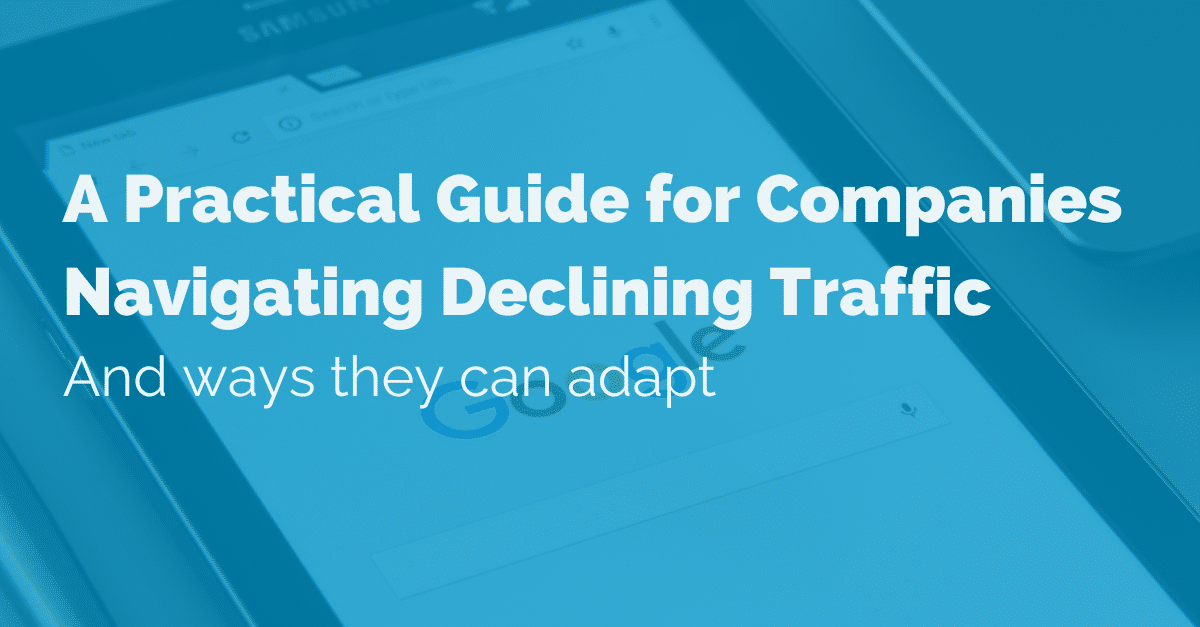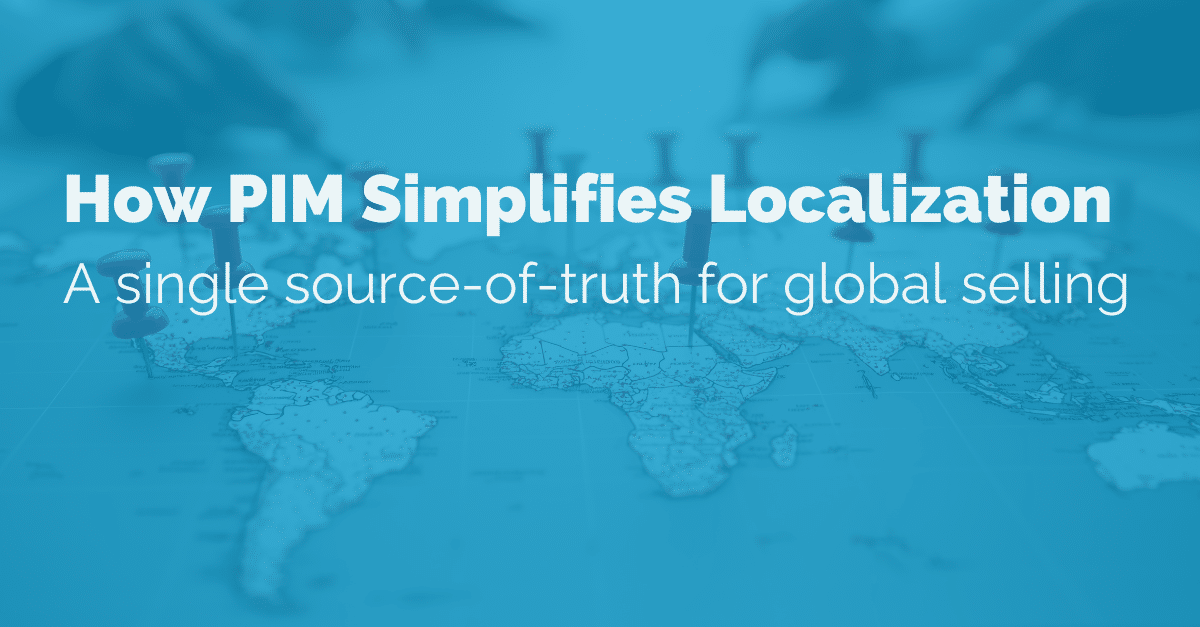ERP tools facilitate the data flow between several company operations and connect them. The systems help to control data duplication and improve data integrity using a single source to gather an organization’s common transactional data from several sources.

ERP systems are now essential for running thousands of companies across all sizes and sectors. In addition, ERP is as critical to these businesses as electricity is to their operating ability. But how can these solutions handle the day-to-day operations of an organization in areas like manufacturing, supply chain management, project management, accounting, and finance?
Enterprise resource planning programs are comprehensive, cloud-based, or on-premises integrated platforms that handle every facet of a production- or distribution-based firm. ERP systems also assist with your primary accounting function and all aspects of supply chain management, production, human resources, and finance management.
What’s an ERP System?
ERP systems manage every facet of manufacturing, logistics, and finance, giving the company process transparency. Several departments can utilize these integrated systems, which serve as a company’s core hub for data and operations from beginning to end. ERP software and systems serve a variety of tasks for small, mid-sized, and large enterprises, including industry-specific adaptations.
So, what are the ERP tools?

Different Types of ERP Tools
Some accounting software manufacturers and ERP software providers offer industry-specific enterprise resource planning tool or components. For instance, manufacturing sector software includes material needs, planning features or MRP. Distributors and manufacturers also require advanced warehouse management functionalities in their ERP systems.
You can find CRM and human resources (HR) software in enterprise resource planning systems. Alternatively, the ERP provider or a favored outside vendor could regard them as non-ERP modules or as additional software that assists these kinds of software.

Your company can add ERP modules or third-party software add-ons if the leading software used for enterprise resource planning needs improved abilities. Basically, order management, payables, international payments, purchases, and supply chain management are functionalities that use a multi-cloud integration paradigm to meet particular demands for company operations. To better understand what are the ERP tools available that your organization should use, here is a detailed analysis of each type:
Cloud ERP
An enterprise resource planning (ERP) system hosted in the cloud is accessible over the Internet from any location. Based on its subscriptionan ERP cloud software system is often known as SaaS (software-as-a-service). Examples include: NetSuite and Microsoft Dynamics 365.
Pros
- Lower upfront investment costs in IT personnel, computer servers, and software.
- Automatic updates managed by the SaaS vendor.
- Accessible anytime and from anywhere.
- Built-in disaster recovery through off-site data backup.
- Real-time analytics capabilities.
Cons
- Ongoing subscription costs can add up over time.
- Limited customization options.
- Internet dependency can disrupt offline operations.
- Potential security vulnerabilities with third-party data storage.

On-Premise ERP
On-Premise ERP software runs on in-house servers. This means company’s IT staff licenses, customizes, upgrades, backs up data, and maintains an the ERP system on company-owned servers and computer equipment. Using contractually hosted offsite servers may also fall within the definition of on-premise. If your firm already has a well-established legacy system, is paid for and well-specialized in its operations, and can afford a sizable, highly-trained IT team and computer equipment. It could pick an on-premise ERP system. Some examples of on-premise ERP systems include: SAP ECC, and Oracle E-Business Suite.
Pros
- Full control over data security.
- More customization capabilities.
- No recurring license fees after implementation.
- Offline functionality.
Cons
- Steep upfront hardware and software costs.
- Requires dedicated IT staff to manage.
- Slow implementation time (6-24 months).
- Manual update processes.
Multi-cloud ERP tools
A multi-cloud ERP system integrates with multiple public clouds (e.g. AWS, Google Cloud, Microsoft Azure), third-party services, and apps. While it may use a cloud-based ERP system, it doesn’t require an on-premise private cloud. By adopting a multi-cloud ERP, organizations can combine various public cloud services, accounting software, and ERP tools, leveraging external infrastructure to enhance flexibility and gain real-time data insights.
Pros
- Reduces dependency on a single provider, enabling flexibility to switch services or negotiate better rates.
- Distributes workloads across providers to mitigate downtime risks.
- Optimize performance by selecting best-in-class services for specific tasks.
- Maintain compliance and data sovereignty by storing data in specific geographic regions.
- Drives cost efficiency and dynamic resource scaling.
Cons
- Can be complex to manage several APIs, tools and workflows.
- Inconsistent security policies between clouds can pose security risks.
- Integration can be challenging across disparate systems.
- Higher-operational costs due to increased monitoring, training and tool expenses.
Hybrid ERP tools
A hybrid ERP system blends cloud computing with on-premise infrastructure, including IoT-connected equipment. Private and public clouds are available for services, preservation, data access, and other uses with cloud systems. Companies who have invested heavily in their bespoke on-premise enterprise resource planning ERP tools and wish to update as much as feasible with the cloud opt for the hybrid option.
Pros
- Balances flexibility of the cloud with the control of on-premises systems.
- Can be a phased migration approach to full cloud ERP adoption.
- Maintains legacy system investments.
- Allows for regional or division-specific cloud deployments.
Cons
- Complex integration management between systems.
- Double maintenance responsibilities.
- Potential issues with data synchronization.
- Higher total ownership costs.

Top 10 Best-in-Class ERP Softwares
Many enterprise resource planning tools options are available, so deciding which best suits your requirements takes time and effort.
To ease your selection, we’ve created a quick review of the top 10 ERP tools:
1) Microsoft Dynamics 365
Microsoft Dynamics is a software system suite that comprises customer relationship management apps and corporate resource planning software providers. From supply chain and financial management to sales and customer service, these ERP systems assist companies of all sizes manage every aspect of their operations. By mapping your processes and customizing the ERP software to your particular industry, you can improve the efficiency and productivity of your brand using Microsoft Dynamics.
Best for:
Large to mid-sized enterprises seeking a comprehensive ERP and CRM solution that can be customized across industries, especially those already using Microsoft products.
Pros:
- Seamless integration with other Microsoft products like Office 365 and Azure.
- Highly customizable and scalable for various industries.
- Strong AI and analytics capabilities for data-driven decisions.
Cons:
- High upfront and ongoing costs for licensing and customization.
- Complex to set up and manage without dedicated IT support.
- Requires significant training due to its extensive functionality.
2) ClickUp
ClickUp is a comprehensive project management and efficiency solution that brands of any size can use. Teams can efficiently manage their goals, tasks, resources, and time because of its adaptability. Its feature-rich free plan is a great place to start for smaller teams and businesses, as it provides a range of customizable capabilities that don’t need coding. Custom fields and customized views set ClickUp apart from other master tools ERP with its user-friendly interfaces and top-notch customer support.
Best for:
Teams and small to medium-sized businesses needing a flexible and cost-effective project and task management solution.
Pros:
- Highly customizable dashboards, views, and workflows.
- Affordable pricing with a generous free tier.
- Excellent collaboration features including chat and document sharing.
Cons:
- Can be overwhelming due to the sheer number of features.
- Some performance lags and bugs reported with larger datasets.
- Steep learning curve for advanced functionalities.

3) Orion
Orion is a robust cloud-based ERP software solution that facilitates corporate process optimization and more effective resource allocation. It improves productivity and collaboration by enabling numerous teams to operate at once. With its user-friendly interface and compatibility with most networks, Orion helps organizations easily oversee employees and manage their assignments and projects.
Best for:
Mid-sized enterprises looking for a cloud-based ERP to streamline cross-department collaboration and resource management.
Pros:
- Intuitive user interface for easier adoption.
- Scalable to meet growing organizational needs.
- Flexible cloud architecture for remote access and collaboration.
Cons:
- Limited third-party integrations compared to bigger platforms.
- Reporting and analytics features could be more robust.
- May require additional training for full optimization.
4) ERPNext
An open-source, free ERP system and accounting program, ERPNext is known for being easy to use and uncomplicated. Nevertheless, this ERP solution has adequate strength to handle every facet of a company. ERPNext is particularly beneficial for small to medium-sized businesses due to its low overhead expenses. Utilize ERPNext’s extensive feature set to centralize your accounting, buying, production, sales, and human resources systems under one roof.
Best for:
Small to medium-sized businesses looking for a cost-effective, open-source ERP with strong core functionalities.
Pros:
- Completely free and open-source, reducing costs.
- Easy to customize for specific workflows.
- Active community support for troubleshooting and plugins.
Cons:
- Requires technical knowledge for setup and customization.
- Limited advanced features compared to enterprise-grade ERPs.
- Smaller support team—reliant on community assistance.
5) NetSuite ERP
A complete cloud-based ERP system offered as software-as-a-service, NetSuite ERP works well for companies of all sizes. It provides instantaneous insight into your company’s financial health. Because NetSuite is so easily customized, using a system tailored to your needs will be a breeze.
Best for:
Growing businesses that need a scalable, all-in-one ERP for financials, CRM, and eCommerce.
Pros:
- Highly customizable and scalable as businesses grow.
- Strong reporting and business intelligence tools.
- Wide range of modules covering all business areas.
Cons:
- Expensive, especially for small businesses.
- Implementation can be time-consuming.
- Some users report a steep learning curve.
Oracle ERP Cloud
This cloud ERP software is ideal for large enterprises with significant data requirements since users like how well it handles enormous volumes of data. Financial oversight, project management, risk, procurement, enterprise management of assets, and other fundamental business intelligence tasks are all covered by Oracle’s toolbox. Oracle expands its functionality and offers a comprehensive company management software solution by connecting with third-party tools.
Best for:
Large enterprises needing robust data management, financial operations, and advanced analytics capabilities.
Pros:
- Handles massive data sets efficiently.
- Comprehensive feature set for all business processes.
- Strong security and compliance options.
Cons:
- High cost, not suitable for small businesses.
- Complex setup and steep learning curve.
- Requires expert consultants for customization and integration.

7) Odoo
Odoo is an open-source ERP and CRM platform that offers a suite of business applications, including sales, inventory, manufacturing, accounting, and more. Its modular system allows companies to pick and choose the apps they need, making it highly flexible and scalable.
Best for:
Startups and SMBs needing a modular, affordable ERP with customizable apps to suit various business needs.
Pros:
- Modular approach — pay for only what you need.
- Open-source with a large community and third-party apps.
- Intuitive interface with strong mobile support.
Cons:
- Some advanced modules require expensive licenses.
- Limited out-of-the-box integration with some systems.
- May require technical expertise for advanced customizations.
8) SAP Business One
SAP Business One is a comprehensive ERP solution tailored to the needs of small to mid-sized companies. It helps businesses manage financials, operations, and customer relationships in a unified system, supporting growth without moving to larger, more complex platforms.
Best for:
Small and medium enterprises needing enterprise-grade features with simplified deployment.
Pros:
- Strong financial and accounting capabilities.
- Great scalability as businesses grow.
- Backed by SAP’s extensive ecosystem and support.
Cons:
- High licensing and maintenance costs.
- Complex initial setup and migration.
- Less intuitive compared to modern lightweight ERPs.
9) Acumatica
Acumatica is a modern cloud-based ERP offering solutions for accounting, inventory, CRM, and project management. Built for scalability and flexibility, Acumatica enables companies to customize their ERP experience while providing strong mobile and remote access.
Best for:
Growing companies that require a flexible, mobile-friendly ERP solution with strong financial management tools.
Pros:
- Strong mobile and cloud capabilities.
- Flexible licensing — pay for usage, not per user.
- Open architecture for easy integration.
Cons:
- Limited global presence compared to giants like SAP.
- Third-party integrations sometimes require additional costs.
- Customization may need developer support.
10) Zoho ERP (Zoho One Suite)
Zoho One is a suite of cloud-based applications that work as a full ERP system, covering CRM, HR, finance, project management, and inventory. Its affordability and all-in-one nature make it attractive to small and medium businesses.
Best for:
Small businesses and startups looking for an affordable all-in-one platform to manage every aspect of their operations.
Pros:
- Affordable all-in-one solution.
- Easy integration between apps in the Zoho ecosystem.
- Great for startups needing fast deployment.
Cons:
- Limited functionality for larger enterprises.
- Some apps less robust than standalone alternatives.
- Customer support can be slow for complex issues.
| Software Name | Best For | Price (Estimate) | ERP Type |
|---|---|---|---|
| Microsoft Dynamics 365 | Large to mid-sized enterprises needing customizable ERP & CRM solutions. | $$$ (Premium) | Cloud-based, Modular ERP + CRM |
| ClickUp | Teams & SMBs needing flexible project & task management. | $ (Affordable) | Project Management & Workflow |
| Orion | Mid-sized enterprises streamlining collaboration & resource management. | $$ (Mid-range) | Cloud ERP for Operations |
| ERPNext | SMBs seeking cost-effective, open-source ERP with core business functions. | Free / $ (Open-source) | Open-source, All-in-one ERP |
| NetSuite ERP | Growing companies needing scalable ERP for financials & eCommerce. | $$$ (Premium) | Cloud ERP SaaS (All-in-one) |
| Oracle ERP Cloud | Large enterprises managing complex data & processes with advanced analytics. | $$$$ (Enterprise-grade) | Cloud ERP (Enterprise) |
| Odoo | Startups & SMBs needing modular, flexible, open-source ERP. | Free (Community) / $$ | Modular, Open-source ERP |
| SAP Business One | SMEs needing enterprise-grade ERP with simplified deployment. | $$$ (Premium) | On-premise/Cloud ERP for SMEs |
| Acumatica | Growing companies needing mobile-friendly, flexible ERP. | $$ (Usage-based) | Cloud ERP (Financial + Ops) |
| Zoho One (Zoho ERP) | Startups/SMBs needing affordable all-in-one business suite. | $ (Affordable) | Cloud ERP Suite (Modular) |
To further summarize our top list of enterprise resource planning ERP tools, here is a ‘runner-up’ when it comes to the best ERP software tools.
Syspro
Syspro is a powerful ERP program designed for distribution businesses. Using it, you can facilitate extensive volume order processing and tracking, obtaining supplies from several vendors, inventory optimization, and information sharing across multiple sites.
Pros
- Automated and digital invoicing
- Analysis and prediction of market trends to assist you in making wise decisions
- A LEAN inventory control method to cut down on mistakes
Cons
- Weak User interface (UI)
- Need to contact for price
Best ERP for Manufacturing
Recommended Software: Odoo
Looking for the best ERP for manufacturing? Odoo stands out as a flexible and cost-effective solution, especially for small to mid-sized manufacturers. Its modular structure allows businesses to seamlessly manage inventory, production planning, quality control, and maintenance—all under one platform. What makes Odoo the best ERP for manufacturing is its ability to automate production workflows, track raw materials, and optimize manufacturing orders, giving companies real-time control over their shop floors. Its open-source flexibility also allows manufacturers to customize processes to their specific industry needs.
Best ERP for Distribution & Retail

Recommended Software: NetSuite ERP
When it comes to the best ERP for distributors and best ERP for retailers, NetSuite ERP is a leading choice. Designed to handle the complex supply chain and inventory management demands of distribution and retail businesses, NetSuite offers real-time inventory visibility, multi-channel sales integration, and automated order management. As the best ERP for retailers and distributors, NetSuite allows companies to optimize pricing, track shipments, and manage vendors efficiently, ensuring a seamless flow of goods from warehouse to customer. Its cloud-based platform makes it scalable as business grows.
Best ERP for Food & Beverage
Recommended Software: Microsoft Dynamics 365
For businesses in the food and beverage industry, Microsoft Dynamics 365 is a top-tier food and beverage ERP that addresses the sector’s unique regulatory and production needs. Dynamics 365 enables precise batch tracking, expiration date management, and compliance with food safety standards. What makes it a standout food and beverage ERP is its ability to manage recipe and formula-based production, quality control, and supply chain transparency, helping companies minimize waste and ensure product quality. Plus, its robust reporting and analytics tools allow businesses to make data-driven decisions quickly.
Best ERP for Construction
Recommended Software: Oracle ERP Cloud
If you’re seeking a powerful ERP for construction, Oracle ERP Cloud is the top choice for large construction firms and complex projects. As a comprehensive ERP software for construction, Oracle offers project lifecycle management, contract and subcontract management, budget tracking, and real-time project costing.

Its ability to handle complex financials, multi-location projects, and regulatory compliance makes Oracle a perfect fit for construction businesses. With built-in business intelligence and predictive analytics, Oracle ERP Cloud ensures construction companies stay on time and within budget—making it a leading ERP for construction.
Bottom line
ERP tools are a great way to manage and optimize a company’s data and system to align each department’s work. In essence, the ERP software tools mentioned above are the best today on the market and help many organizations improve their management. Finally, if you require management tools and systems, contact us at Pimberly for top-notch services near you.
Take a Deeper Dive
In a personalized demo of our product information management (PIM) platform, you’ll see how you can:
- Easily create, enrich and automate complex product data, images, and videos.
- Drive sales and deliver best-in-class online experiences.
- Increase revenue by reaching new channels and markets with confidence in your data.
- Give your teams a central hub to manage and update product data.
Book a Demo
















